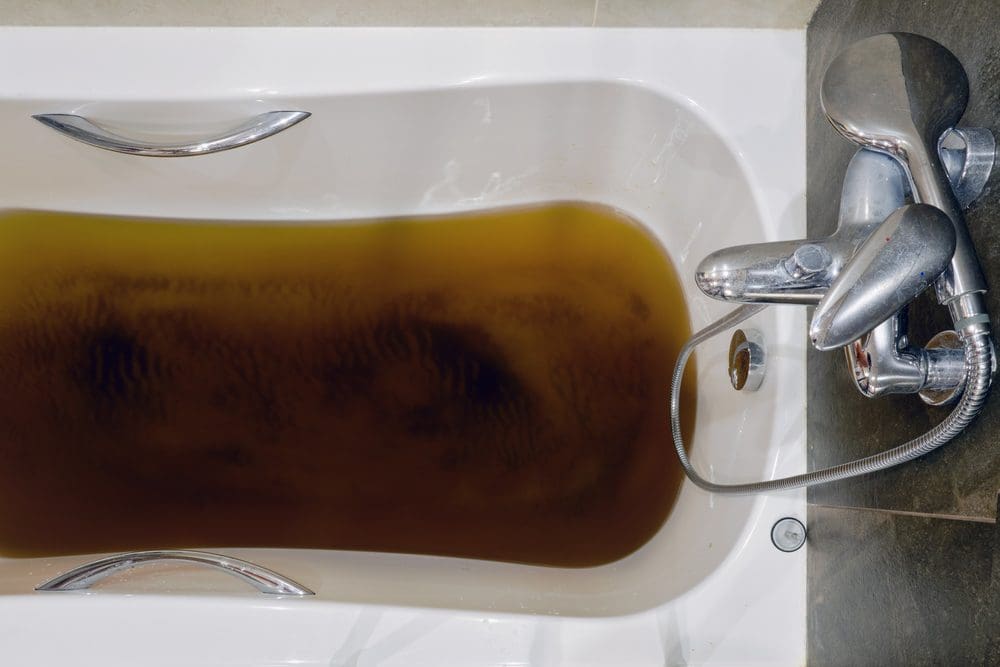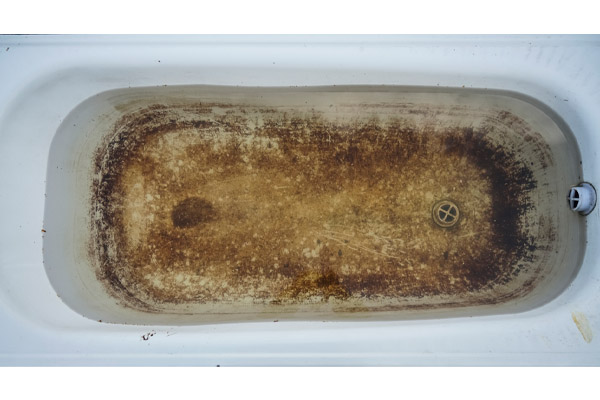My Definitive Answer: Waste Coming Up Through the Bathtub
Call TodayHave you been looking for content involving What To Do If Sewage Starts Backing Up Into the Shower?

Sewage backup in the tub can be a distressing and unhygienic problem for any kind of house owner. Not only is it inconvenient, however it additionally poses severe wellness risks and shows underlying issues with the plumbing system. Comprehending why sewer is turning up with the tub is vital for taking proper activity to address the problem successfully.
Introduction to the Issue
Understanding the Problem
When sewer starts backing up into the bath tub, it's a clear indication of an issue with the drain system. The wastewater that must be streaming away from your home is rather locating its way back right into your home, which can bring about considerable damage and carcinogen.
Possible Causes
Several elements can add to sewage back-up in the bath tub. From obstructions in the sewer line to concerns with the plumbing facilities, identifying the origin is vital for finding a solution.
Usual Factors for Sewage Backup
Clogs in the Sewer Line
One of the most typical causes of sewage backup is an obstruction in the drain line. This can take place due to the buildup of debris, oil, or foreign items in the pipes, avoiding proper flow and creating sewer to support into your tub.
Tree Origin Intrusion
Tree roots seeking moisture and nutrients can penetrate drain lines with tiny cracks or joints. In time, these origins can expand and broaden, causing significant damages to the pipes and causing sewer back-up issues.
Aging Infrastructure
Older homes may have outdated plumbing systems that are more susceptible to deterioration, splits, and wear and tear. As pipelines age, they come to be much more susceptible to leakages and blockages, raising the chance of sewer backup incidents.
Heavy Rainfall or Flooding
During durations of heavy rainfall or flooding, the drain system might come to be overloaded with excess water, creating backups and overflows. This can lead to sewer backing up right into bath tubs and other components inside the home.
Health Threats Associated with Sewage Backup
Contamination of Supply Of Water
Sewage backup can contaminate the water in your house, positioning a significant wellness threat to you and your family. Direct exposure to infected water can lead to intestinal concerns, skin infections, and various other illnesses.
Spread of Condition
Sewer consists of dangerous bacteria, viruses, and parasites that can cause a variety of illness, including hepatitis, cholera, and gastroenteritis. Entering contact with sewer or contaminated surface areas puts you at risk of infection.
Mold Development
Wetness from sewage back-up can create suitable conditions for mold and mildew development in your home. Mold spores can aggravate respiratory system problems and create allergic reactions in delicate people, making timely cleaning necessary.
Indications of Sewer Back-up
Foul Odors
Undesirable odors originating from drains or components, particularly in the bathroom, might show sewage backup concerns. These smells are frequently solid and relentless, indicating a trouble that requires prompt interest.
Slow Draining Fixtures
Tubs, sinks, and toilets that drain gradually or otherwise whatsoever could be experiencing sewage back-up. If numerous fixtures are affected concurrently, it's likely that the issue stems from a typical factor, such as the primary sewer line.
Gurgling Sounds
Unusual gurgling or gurgling sounds coming from drains pipes when water is running elsewhere in the house are a measure of air caught in the plumbing system. This air accumulation can arise from sewage back-up and should be examined quickly.
Immediate Actions to Take
Switching Off Water System
In case of sewer backup, it's important to switch off the water to prevent further contamination and damage. Situate the major water shutoff valve in your home and shut it off till the problem can be dealt with.
Calling an Expert Plumber
Handling sewer backup is not a DIY work. Call a licensed plumber with experience in taking care of sewage-related issues to evaluate the situation and perform essential repair work or cleanups.
Avoiding Contact with Infected Water
Till the sewage backup is dealt with, stay clear of contact with polluted water to prevent the spread of microorganisms and pathogens. Put on safety equipment if you have to remain in the damaged location and clean your hands thoroughly later.
Preventive Measures
Routine Upkeep of Drain Lines
Set up routine inspections and maintenance of your sewage system lines to recognize and address prospective issues prior to they rise into significant issues. This can consist of cleaning particles, inspecting for tree origin intrusion, and fixing any damaged pipes.
Mounting Bayou Valves
Take into consideration setting up backwater valves in your plumbing system to prevent sewage from flowing back into your home during periods of heavy rainfall or flooding. These shutoffs immediately close when water starts backing up, protecting your building from contamination.
Proper Disposal of Home Waste
Prevent flushing anything other than toilet paper and human waste down the toilet to stop blockages and obstructions in the sewer line. Dispose of oil, oil, and other household chemicals properly to minimize the danger of plumbing problems.
Tidying up After Sewer Backup
Disinfection Procedures
Thoroughly sanitize and sanitize impacted areas after sewage back-up to eliminate harmful germs and prevent mold growth. Use proper cleaning products and safety equipment to guarantee risk-free and efficient cleaning.
Reconstruction of Influenced Locations
Repair any type of damage to floor covering, walls, or fixtures brought on by sewage backup. Relying on the level of the damage, you might need to change carpets, drywall, or various other materials to restore your home to its pre-loss problem.
Sewage Coming Up Through the Bathtub?
Understanding the Plumbing System:
To understand why sewage is coming up through your bathtub, it is essential to have a basic understanding of the plumbing system. The plumbing system is a complex network of pipes, valves, fixtures, and drains that work together to provide clean water to your home and remove waste and sewage. The system consists of two parts: the supply system and the drainage system.
The supply system brings clean water to your home, while the drainage system removes wastewater from your sinks, toilets, showers, and bathtubs. The drainage system is connected to the main sewer line, which carries the wastewater to the municipal sewage treatment plant or septic tank.
Causes of Sewage Coming Up Through the Bathtub:
Sewage coming up through the bathtub can be caused by various factors. Some of the most common causes are:
Clogged Drain Pipes:
One of the most common reasons for sewage coming up through the bathtub is a clogged drain pipe. Over time, debris, hair, soap scum, and other foreign objects can accumulate in the drain pipes, leading to a blockage. This can cause the wastewater to back up and come out of the bathtub.
Main Sewer Line Blockage:
Another reason for sewage coming up through the bathtub is a blockage in the main sewer line. The main sewer line connects your home’s drainage system to the municipal sewer system. If the main sewer line gets clogged due to tree roots, grease buildup, or other obstructions, it can cause sewage to back up into your home’s plumbing fixtures, including the bathtub.
Sewage Backup:
Sewage backup is another common cause of sewage coming up through the bathtub. Sewage backup occurs when there is a problem with the municipal sewer system, such as heavy rainfall, flooding, or a malfunctioning pump. When this happens, sewage can flow back into your home’s drainage system and cause sewage backup in your plumbing fixtures, including the bathtub.
Broken or Damaged Pipes:
Finally, broken or damaged pipes can also cause sewage to come up through the bathtub. Over time, pipes can deteriorate due to age, corrosion, or external factors such as shifting soil. When pipes break or crack, wastewater can leak out and cause sewage backup in your plumbing fixtures.
Signs of Sewage Coming Up Through the Bathtub:
Some of the signs that sewage is coming up through your bathtub include:
Foul odor: If you notice a strong, unpleasant odor coming from your bathtub drain, it could be a sign of sewage backup. The smell is caused by the buildup of organic waste in the pipes. Slow drainage: If your bathtub drains slowly or not at all, it could be a sign of a clogged drain pipe or a more severe problem with the main sewer line. Gurgling sounds: If you hear gurgling sounds coming from your bathtub drain or other plumbing fixtures, it could indicate that air is trapped in the pipes due to a blockage. Prevention Measures:
The best way to prevent sewage from coming up through the bathtub is to take preventative measures. Here are some practical tips:
Regular Drain Cleaning:
Regular drain cleaning can help prevent clogs and keep your pipes in good condition. You can use a plunger, drain snake, or enzymatic drain cleaner to remove any buildup of hair, soap scum, or other debris in your bathtub drain.
Proper Waste Disposal:
Improper waste disposal can also contribute to sewage backup. Avoid flushing non-biodegradable items, such as paper towels, feminine hygiene products, or wipes down the toilet. Also, be mindful of what you pour down the drain, such as grease, oil, or coffee grounds, as they can cause clogs.
Professional Plumbing Maintenance:
Regular plumbing maintenance can help prevent plumbing emergencies, such as sewage backup. A professional plumber can inspect your pipes, identify any potential issues, and perform preventative measures, such as hydro jetting, to clean your pipes.
Hydro Jetting:
Hydro jetting is a powerful method that uses high-pressure water to clean the pipes thoroughly. It can remove even the most stubborn clogs and prevent future blockages.

I'm just very focused on Why is Sewage Backing Up Into My Bathtub? and I really hope you enjoyed my blog post. Sharing is nice. You just don't know, you may be helping someone out. Thanks for being here. Please visit our blog back soon.
Contact Us